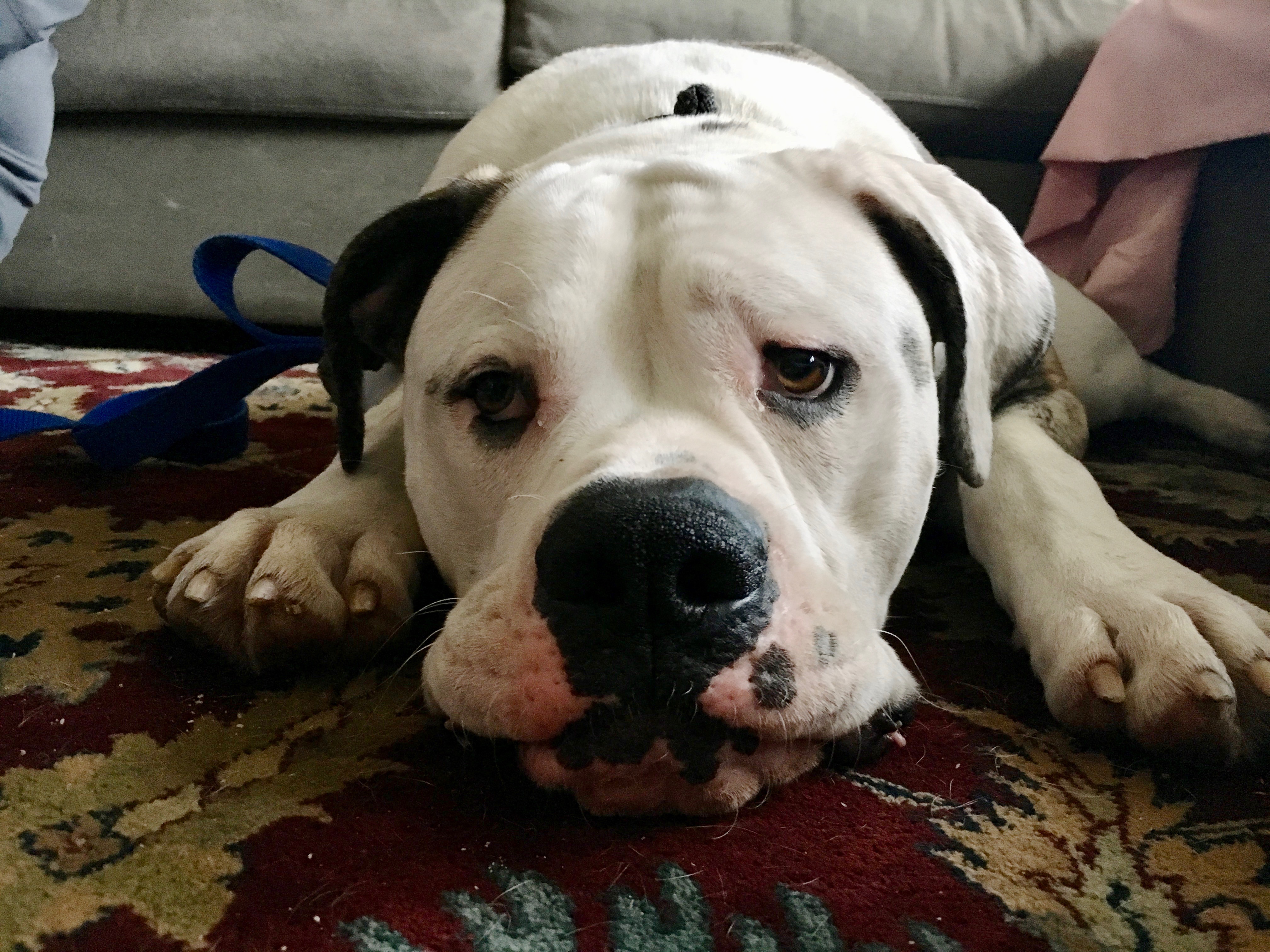Helping a Big American Bulldog Pup Stop Lunging at People it Doesn’t Want Close
By: David Codr
Published Date: March 1, 2018
For this Omaha dog training session we worked with Bob, a 1 year-old American Bulldog who sometimes barks and lunges at people he doesn’t know when they come into his home or get too close.
As soon as he saw me walking up to the front door, Bob started to bark and get animated. When I got to the door his guardian told him to stay before letting me in. As soon as I got inside, Bob’s barking subsided a bit so I tossed him a few high value treats.
For a minute, this seemed to have a positive impact on Bob, but when I reached into my bag to grab some more, Bob got spooked and started barking with considerable more intensity. In addition to barking, Bob started bouncing around the room a bit, barking while darting towards me then turning and moving away. Eventually he took a position on the couch to bark and got even more intense. At this point I had his guardian put him in the kennel as he was far above threshold and clearly out of balance.
I could tell that Bob was not acting in a dominantly aggressive way. He showed a number of signs of insecurity such as barking and backing away. Many people see a large dog barking and lunging and assume the worst. But I read it as Bob’s attempt to get more distance between himself and this new visitor.
To help Bob learn a different way to increase the distance between himself and people he isn’t comfortable with, I wanted to show his guardians a way to do some behavior adjustment training.
I had arranged for our Director of Operations to join us to help Bob with his aggressive behavior towards guests. Setting up a staged scenario where you control the situation is a great way to help a dog practice new techniques or exercises.
To find out how to stop a dog from acting aggressively towards a person, watch the video below.
This is a great technique to use when a dog acts aggressively towards strangers it doesn’t want that close as the dog learns that it is empowered to move away on its own. At first, we help by offering suggestions any time the handler notices the dog gets anxious; stiff body, staring, tail goes up or it tension on the leash. When that happens, calling the dog away helps introduce this alternative option to the dog.
I made sure to point out the importance of reading the dog and calling it away BEFORE it gets agitated to the point of reacting. You never way to pull a dog away using this technique, so recognizing the dog is not happy as early as possible is key.
Because of Bob’s size and insecurity, we may need to set up a follow up session to build on the progress the guardians make over the next month.
To help the guardians help Bob with his confident and insecurities, I went over a number of tips and suggestions to help Bob feel less anxious such as petting with a purpose, passive training, introducing and enforcing enforcing rules consistently and some management.
You can learn about the dog behavior tips I just mentioned by watching Bob’s Roadmap to Success video below.
Categorized in: Dog Behavior


